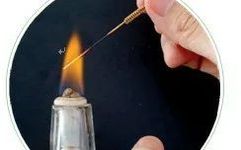Since the earliest written records, fire needle therapy has been developed and applied for over two thousand years. It has undergone a journey from rudimentary tools and primitive operational methods, through improvements and refinements by generations of physicians, leading to a gradual standardization of fire needle instruments and their operational techniques. Its clinical application scope has also expanded, making it a unique therapeutic system within acupuncture.
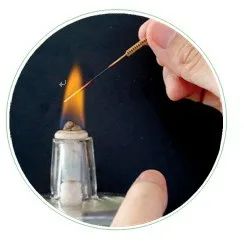 The Historical Development of Fire Needle TherapyIn ancient times, fire needle therapy was referred to as “chuan ci” (焠刺), and fire needles were called “ran zhen” (燔针), “chuan zhen” (焠针), “da zhen” (大针), “bai zhen” (白针), etc. The characteristic of fire needle therapy is the use of needles made from tungsten-based high-density hard alloy materials, which are heated until red and then quickly inserted into selected areas of the body using specific techniques to achieve the goal of eliminating diseases.Originating in the Qin and Han DynastiesThe Huangdi Neijing (《黄帝内经》) provides a relatively systematic understanding of fire needle therapy, clearly documenting the name of the therapy, the instruments, techniques, indications, and contraindications for the first time. The author has verified through extensive literature that the “da zhen” (大针) mentioned in the Huangdi Neijing is actually a misnomer for “fire needle”. The Ling Shu (《灵枢•九针十二原》) states: “The ninth is called da zhen, four inches long… The da zhen is sharp like a stick, with a slightly rounded tip.” This needle is thick and has a slightly rounded tip, suitable for the requirements of high temperature and rapid insertion, which actually describes the fire needle.
The Historical Development of Fire Needle TherapyIn ancient times, fire needle therapy was referred to as “chuan ci” (焠刺), and fire needles were called “ran zhen” (燔针), “chuan zhen” (焠针), “da zhen” (大针), “bai zhen” (白针), etc. The characteristic of fire needle therapy is the use of needles made from tungsten-based high-density hard alloy materials, which are heated until red and then quickly inserted into selected areas of the body using specific techniques to achieve the goal of eliminating diseases.Originating in the Qin and Han DynastiesThe Huangdi Neijing (《黄帝内经》) provides a relatively systematic understanding of fire needle therapy, clearly documenting the name of the therapy, the instruments, techniques, indications, and contraindications for the first time. The author has verified through extensive literature that the “da zhen” (大针) mentioned in the Huangdi Neijing is actually a misnomer for “fire needle”. The Ling Shu (《灵枢•九针十二原》) states: “The ninth is called da zhen, four inches long… The da zhen is sharp like a stick, with a slightly rounded tip.” This needle is thick and has a slightly rounded tip, suitable for the requirements of high temperature and rapid insertion, which actually describes the fire needle.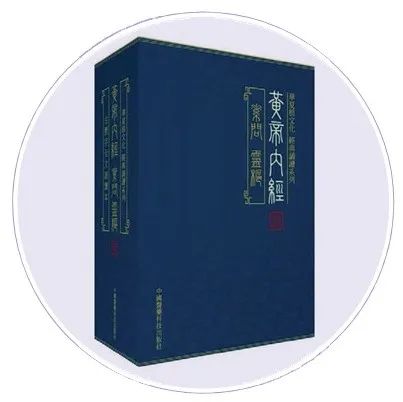 The Huangdi Neijing also refers to fire needles as “ran zhen” (燔针) and “chuan zhen” (焠针). The Suwen (《素问•调经论》) states:“When the disease is in the bones, use chuan zhen and medicinal compresses.” The Ling Shu (《灵枢•官针》) states:“In all needling, there are nine… the ninth is chuan ci; chuan ci refers to using fire needles to treat bi syndrome.” This shows that fire needle therapy was referred to as “chuan ci” (焠刺).The Huangdi Neijing mentions four indications for fire needle therapy:bi syndrome, cold syndrome, meridian and sinew diseases, and bone diseases. It also mentions contraindications for fire needle therapy, such as in the Ling Shu (《灵枢•经筋》) stating:“Chuan ci is for treating cold and urgent conditions; if it is hot, the sinews will not contract, and fire needles are of no use.” This indicates that at that time, heat syndrome was a contraindication for fire needle therapy.
The Huangdi Neijing also refers to fire needles as “ran zhen” (燔针) and “chuan zhen” (焠针). The Suwen (《素问•调经论》) states:“When the disease is in the bones, use chuan zhen and medicinal compresses.” The Ling Shu (《灵枢•官针》) states:“In all needling, there are nine… the ninth is chuan ci; chuan ci refers to using fire needles to treat bi syndrome.” This shows that fire needle therapy was referred to as “chuan ci” (焠刺).The Huangdi Neijing mentions four indications for fire needle therapy:bi syndrome, cold syndrome, meridian and sinew diseases, and bone diseases. It also mentions contraindications for fire needle therapy, such as in the Ling Shu (《灵枢•经筋》) stating:“Chuan ci is for treating cold and urgent conditions; if it is hot, the sinews will not contract, and fire needles are of no use.” This indicates that at that time, heat syndrome was a contraindication for fire needle therapy.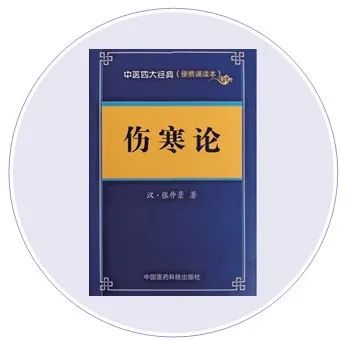 Since the Neijing, fire needle therapy has been widely used by physicians throughout the ages, and its application scope has continuously expanded. The numerous mentions of the misuse of fire needles in the Shanghan Lun (《伤寒论》) suggest that by the Han Dynasty, fire needle therapy was already quite widespread in clinical practice, even leading to instances of misuse or abuse. The text also frequently mentions the contraindications of fire needle therapy and how to handle misuse. The Shanghan Lun affirms the therapeutic effects of fire needle therapy, referring to it as “shao zhen” (烧针) or “wen zhen” (温针), and further enriches the content of fire needle therapy based on the Huangdi Neijing, indicating that fire needles can assist yang and induce sweating to expel external pathogens, used to treat the exterior syndrome of typhoid fever.Development in the Jin and Tang DynastiesIn the Jin Dynasty, Huangfu Mi wrote the Zhen Jiu Jia Yi Jing (《针灸甲乙经》), affirming the technique of “chuan ci”, stating: “Chuan ci refers to using fire needles to treat bi qi.” “For treating cold pathogens, use fine needles to warm.” It emphasized the indications for fire needles and the patient’s constitution, stating, “Therefore, those who use needles must understand the age, the vigor and decline of qi, and the conditions of deficiency and excess; otherwise, they cannot be skilled.” This book played a transitional role in the transmission of fire needle therapy.
Since the Neijing, fire needle therapy has been widely used by physicians throughout the ages, and its application scope has continuously expanded. The numerous mentions of the misuse of fire needles in the Shanghan Lun (《伤寒论》) suggest that by the Han Dynasty, fire needle therapy was already quite widespread in clinical practice, even leading to instances of misuse or abuse. The text also frequently mentions the contraindications of fire needle therapy and how to handle misuse. The Shanghan Lun affirms the therapeutic effects of fire needle therapy, referring to it as “shao zhen” (烧针) or “wen zhen” (温针), and further enriches the content of fire needle therapy based on the Huangdi Neijing, indicating that fire needles can assist yang and induce sweating to expel external pathogens, used to treat the exterior syndrome of typhoid fever.Development in the Jin and Tang DynastiesIn the Jin Dynasty, Huangfu Mi wrote the Zhen Jiu Jia Yi Jing (《针灸甲乙经》), affirming the technique of “chuan ci”, stating: “Chuan ci refers to using fire needles to treat bi qi.” “For treating cold pathogens, use fine needles to warm.” It emphasized the indications for fire needles and the patient’s constitution, stating, “Therefore, those who use needles must understand the age, the vigor and decline of qi, and the conditions of deficiency and excess; otherwise, they cannot be skilled.” This book played a transitional role in the transmission of fire needle therapy.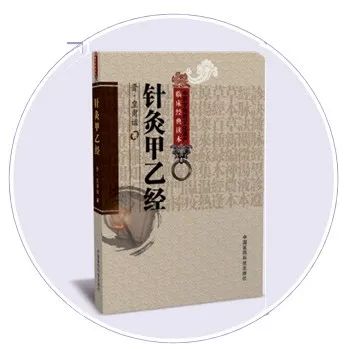 The term “fire needle” first appeared in the Jin Dynasty in the book Xiao Pin Fang (《小品方》) by Chen Yanzhi, stating: “For bone abscess… if it does not dissipate and becomes pus, use fire needles, ointments, and powders.” The book also first applied fire needle therapy to ophthalmic diseases, stating, “Heat the needle until red, and apply it to the skin, not exceeding three applications.”
The term “fire needle” first appeared in the Jin Dynasty in the book Xiao Pin Fang (《小品方》) by Chen Yanzhi, stating: “For bone abscess… if it does not dissipate and becomes pus, use fire needles, ointments, and powders.” The book also first applied fire needle therapy to ophthalmic diseases, stating, “Heat the needle until red, and apply it to the skin, not exceeding three applications.”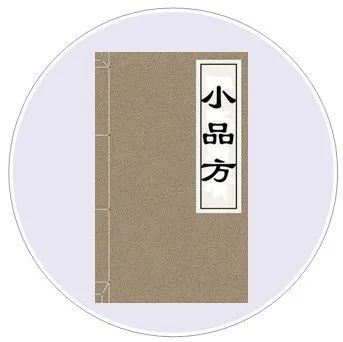 Sun Simiao, known as the King of Medicine, in his works Bei Ji Qian Jin Yao Fang (《备急千金要方》) and Qian Jin Yi Fang (《千金翼方》), contributed to the development of fire needle therapy in three main aspects: ① He was the first to document that fire needle therapy could treat heat syndromes, breaking the limitations of the Huangdi Neijing which contraindicated fire needles for heat syndromes, greatly expanding the applicability of fire needles. It could be used to treat internal diseases such as jaundice, mania, and bi syndrome, as well as external diseases like abscesses, carbuncles, and bleeding. For example: “For external scabies and carbuncles, use needles only when extremely hot.” “If there is pus in the carbuncle, it can be broken, allowing the pus to flow out; use fire needles for deep pus that is hard to see, and for thick flesh, use fire needles.” He also stated: “Using fire needles at the head, inserting four fen will heal.” ② He broke the method of using pain as a guide for needling. For example: “For the xia ren zhong point, use fire needles to treat horse jaundice and epidemic diseases throughout the body, where the voice has not turned.” In the thirteen ghost needle methods, the ghost routes, ghost pillow, ghost bed, and ghost hall points all state: “Fire needles seven times, three times down.” ③ He proposed contraindicated acupoints for fire needles, stating, “Ju Que, Tai Cang, and the six acupoints along this line are contraindicated for fire needles.”
Sun Simiao, known as the King of Medicine, in his works Bei Ji Qian Jin Yao Fang (《备急千金要方》) and Qian Jin Yi Fang (《千金翼方》), contributed to the development of fire needle therapy in three main aspects: ① He was the first to document that fire needle therapy could treat heat syndromes, breaking the limitations of the Huangdi Neijing which contraindicated fire needles for heat syndromes, greatly expanding the applicability of fire needles. It could be used to treat internal diseases such as jaundice, mania, and bi syndrome, as well as external diseases like abscesses, carbuncles, and bleeding. For example: “For external scabies and carbuncles, use needles only when extremely hot.” “If there is pus in the carbuncle, it can be broken, allowing the pus to flow out; use fire needles for deep pus that is hard to see, and for thick flesh, use fire needles.” He also stated: “Using fire needles at the head, inserting four fen will heal.” ② He broke the method of using pain as a guide for needling. For example: “For the xia ren zhong point, use fire needles to treat horse jaundice and epidemic diseases throughout the body, where the voice has not turned.” In the thirteen ghost needle methods, the ghost routes, ghost pillow, ghost bed, and ghost hall points all state: “Fire needles seven times, three times down.” ③ He proposed contraindicated acupoints for fire needles, stating, “Ju Que, Tai Cang, and the six acupoints along this line are contraindicated for fire needles.”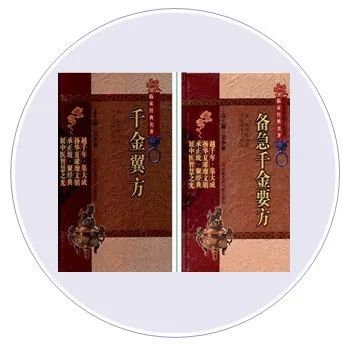 After the Song Dynasty, the indications for fire needle therapy further developed based on the Neijing. From the perspective of disease location, fire needles expanded from treating sinew and bone diseases to being applicable for internal diseases. For instance, Wang Zhizhong’s Zhen Jiu Zi Sheng Jing (《针灸资生经》) applied fire needle therapy more broadly to internal diseases, documenting experiences in treating abdominal pain, asthma, and low back pain with fire needles, such as: “For low back pain, if entering and exiting is very difficult, I use fire needles to gently and frequently prick the shen shu point, and then the patient can walk as before.” This sentence includes the disease name, symptoms, acupoint selection, technique, and treatment effect, setting a precedent for documenting fire needle case studies.Refinement in the Ming and Qing DynastiesThe Ming and Qing Dynasties were the peak periods for the development of fire needle therapy. Acupuncturists built upon the foundation laid by the Huangdi Neijing and drew from the medical experiences of the Tang and Song Dynasties, improving and enhancing all aspects of fire needle therapy, including the needling tools, operational methods, indications, and contraindications, leading to the maturation of fire needle therapy. The acupuncturist Gao Wu made the most significant contributions to the development and improvement of fire needle therapy during this period. In his work Zhen Jiu Ju Ying (《针灸聚英》), he systematically and comprehensively summarized the achievements of predecessors in fire needle therapy, providing a systematic summary and categorization of fire needle instruments, heating methods, needling techniques, insertion depth, indications, contraindications, and the effects of fire needles, asserting that fire needles have two major effects: promoting qi and dispersing. The publication of Zhen Jiu Ju Ying marked the maturity and perfection of fire needle therapy. Other medical texts such as Zhen Jiu Da Cheng (《针灸大成》) and Ming Yi Lei An (《名医类案》) also documented fire needle therapy, with notable mentions in the Ming Shi (《明史•周汉卿传》) regarding the use of fire needles to treat intestinal abscesses.
After the Song Dynasty, the indications for fire needle therapy further developed based on the Neijing. From the perspective of disease location, fire needles expanded from treating sinew and bone diseases to being applicable for internal diseases. For instance, Wang Zhizhong’s Zhen Jiu Zi Sheng Jing (《针灸资生经》) applied fire needle therapy more broadly to internal diseases, documenting experiences in treating abdominal pain, asthma, and low back pain with fire needles, such as: “For low back pain, if entering and exiting is very difficult, I use fire needles to gently and frequently prick the shen shu point, and then the patient can walk as before.” This sentence includes the disease name, symptoms, acupoint selection, technique, and treatment effect, setting a precedent for documenting fire needle case studies.Refinement in the Ming and Qing DynastiesThe Ming and Qing Dynasties were the peak periods for the development of fire needle therapy. Acupuncturists built upon the foundation laid by the Huangdi Neijing and drew from the medical experiences of the Tang and Song Dynasties, improving and enhancing all aspects of fire needle therapy, including the needling tools, operational methods, indications, and contraindications, leading to the maturation of fire needle therapy. The acupuncturist Gao Wu made the most significant contributions to the development and improvement of fire needle therapy during this period. In his work Zhen Jiu Ju Ying (《针灸聚英》), he systematically and comprehensively summarized the achievements of predecessors in fire needle therapy, providing a systematic summary and categorization of fire needle instruments, heating methods, needling techniques, insertion depth, indications, contraindications, and the effects of fire needles, asserting that fire needles have two major effects: promoting qi and dispersing. The publication of Zhen Jiu Ju Ying marked the maturity and perfection of fire needle therapy. Other medical texts such as Zhen Jiu Da Cheng (《针灸大成》) and Ming Yi Lei An (《名医类案》) also documented fire needle therapy, with notable mentions in the Ming Shi (《明史•周汉卿传》) regarding the use of fire needles to treat intestinal abscesses.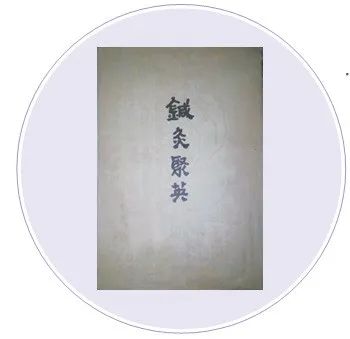 As people’s understanding of fire needle therapy improved, during the Qing Dynasty, several physicians further developed and supplemented fire needle therapy. Chen Shigong proposed a widely used method for treating scrofula with fire needles in his work Wai Ke Zheng Zong (《外科正宗》).
As people’s understanding of fire needle therapy improved, during the Qing Dynasty, several physicians further developed and supplemented fire needle therapy. Chen Shigong proposed a widely used method for treating scrofula with fire needles in his work Wai Ke Zheng Zong (《外科正宗》).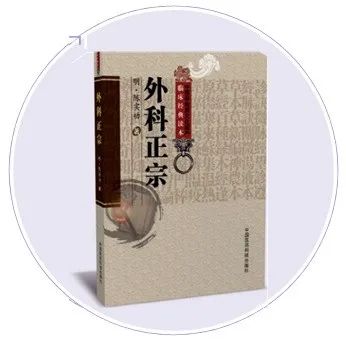 Wu Yiluo not only inherited the academic viewpoints of predecessors, such as using fire needles to treat muscle tension, bi syndrome, paralysis, accumulation, and carbuncles, but also proposed the use of fire needles for ophthalmic diseases in his work Ben Cao Cong Xin (《本草从新》), arguing that using fire needles for eye diseases not only expanded the treatment scope of fire needles but also eliminated the prejudice that fire needle therapy is “rough, unsafe, and highly dangerous.” Liao Runhong believed that fire needles have effects similar to moxibustion and pointed out that fire needles are easier to accept than moxibustion, making them a viable alternative.
Wu Yiluo not only inherited the academic viewpoints of predecessors, such as using fire needles to treat muscle tension, bi syndrome, paralysis, accumulation, and carbuncles, but also proposed the use of fire needles for ophthalmic diseases in his work Ben Cao Cong Xin (《本草从新》), arguing that using fire needles for eye diseases not only expanded the treatment scope of fire needles but also eliminated the prejudice that fire needle therapy is “rough, unsafe, and highly dangerous.” Liao Runhong believed that fire needles have effects similar to moxibustion and pointed out that fire needles are easier to accept than moxibustion, making them a viable alternative.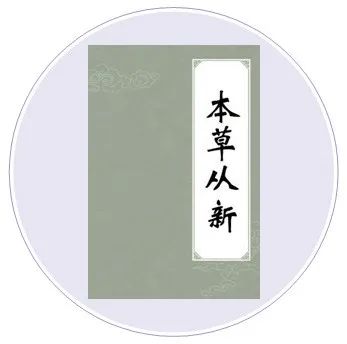 Modern works such as Jin Zhen Bai Ri Tong (《金针百日通》) refer to fire needles as “wu zhen” (武针) and fine needles as “qi zhen” (气针), documenting common diseases treated with fire needles. Zhou Shudong, in Jin Zhen Mei Hua Shi Chao (《金针梅花诗抄》), summarizes the clinical diseases treated with fire needles in poetic form, stating:“Ran zhen is the fire needle, effective in eliminating bi and dispelling cold; scrofula and yin abscesses are often treated with chuan ci; be cautious not to recklessly apply it.”
Modern works such as Jin Zhen Bai Ri Tong (《金针百日通》) refer to fire needles as “wu zhen” (武针) and fine needles as “qi zhen” (气针), documenting common diseases treated with fire needles. Zhou Shudong, in Jin Zhen Mei Hua Shi Chao (《金针梅花诗抄》), summarizes the clinical diseases treated with fire needles in poetic form, stating:“Ran zhen is the fire needle, effective in eliminating bi and dispelling cold; scrofula and yin abscesses are often treated with chuan ci; be cautious not to recklessly apply it.”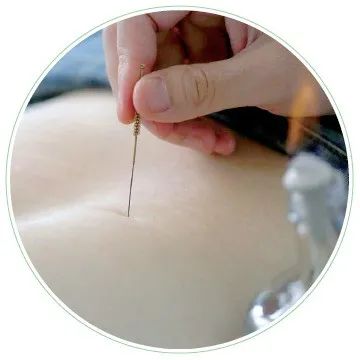 Promotion in Modern TimesFire needle therapy has gradually become a unique treatment method for disease prevention and treatment in clinical practice through the development by generations of physicians. In contemporary times, fire needle therapy has regained attention and promotion, with diseases treated including internal medicine, orthopedics, surgery, dermatology, gynecology, and otorhinolaryngology. Traditional contraindications for fire needle therapy and acupoint contraindications have also been broken through. In modern research and application of fire needles, the contributions of Professor He Purin, the first National Master of Traditional Chinese Medicine, and Professor Shi Huaidang are particularly notable.Professor He Purin, the first National Master of Traditional Chinese MedicineImage: Illustrated Fire Needle Therapy, Beijing: China Medical Science and Technology Press ▼
Promotion in Modern TimesFire needle therapy has gradually become a unique treatment method for disease prevention and treatment in clinical practice through the development by generations of physicians. In contemporary times, fire needle therapy has regained attention and promotion, with diseases treated including internal medicine, orthopedics, surgery, dermatology, gynecology, and otorhinolaryngology. Traditional contraindications for fire needle therapy and acupoint contraindications have also been broken through. In modern research and application of fire needles, the contributions of Professor He Purin, the first National Master of Traditional Chinese Medicine, and Professor Shi Huaidang are particularly notable.Professor He Purin, the first National Master of Traditional Chinese MedicineImage: Illustrated Fire Needle Therapy, Beijing: China Medical Science and Technology Press ▼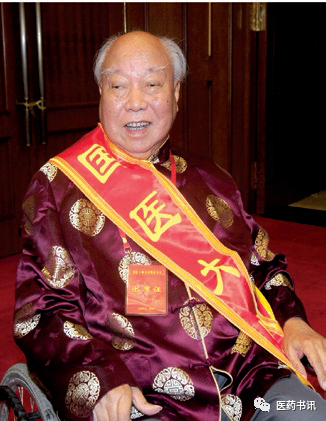 “He’s Three Passes Acupuncture Method” – Fire NeedleProfessor He Purin created the acupuncture treatment system known as “He’s Three Passes Acupuncture Method” based on his core idea of “many diseases are due to qi stagnation, and the method uses three passes.” This includes the micro-pass method, warm-pass method, and strong-pass method. The “micro-pass method” is the fine needle technique we often use, which serves to open meridians and regulate qi and blood. The “warm-pass method” refers to using fire needles and moxibustion on acupoints or specific areas, utilizing fire and heat stimulation to warm yang, dispel cold, and promote qi and blood circulation to cure diseases.
“He’s Three Passes Acupuncture Method” – Fire NeedleProfessor He Purin created the acupuncture treatment system known as “He’s Three Passes Acupuncture Method” based on his core idea of “many diseases are due to qi stagnation, and the method uses three passes.” This includes the micro-pass method, warm-pass method, and strong-pass method. The “micro-pass method” is the fine needle technique we often use, which serves to open meridians and regulate qi and blood. The “warm-pass method” refers to using fire needles and moxibustion on acupoints or specific areas, utilizing fire and heat stimulation to warm yang, dispel cold, and promote qi and blood circulation to cure diseases.
“Strong-pass method” refers to “bloodletting therapy”, which involves using a three-edged needle or other instruments to puncture superficial blood vessels or acupoints in specific areas of the body. Depending on the condition, a suitable amount of blood is released to treat pain through bloodletting, regulating qi, and opening meridians. Fire needle therapy falls under the “warm-pass method,” while fire needle bloodletting is part of the “strong-pass method.”
“He’s Three Passes Acupuncture Method”has opened a new era for fire needle therapy, promoting its clinical application and providing a new treatment method for resolving some difficult diseases. “He’s Fire Needle Therapy” has the following characteristics:(1) Elucidation of the therapeutic principles of fire needles: Professor He studied the Neijing and Nanjing, believing that when yang heat is abundant, yin cold can be dispelled; when cold is removed, the meridians are unblocked, and qi and blood are harmonized, leading to self-healing of various diseases. Fire needle therapy relies solely on fire power; if there is no pathogen, it warms and supplements; if there is a pathogen, it overcomes the pathogen, having the effect of dispelling cold pathogens and tonifying yang qi. Professor He believes that regardless of the condition’s cold or heat, deficiency or excess, or the severity and proximity of the lesion, fire needles are applicable. As stated by Gong Juzhong in the Ming Dynasty in Hong Lu Dian Xue: “Cold diseases disperse with fire, just as the scorching sun melts ice; heat diseases resolve with fire, just as extreme heat turns to coolness; deficiency conditions strengthen with fire, just as fire forces ice to rise; excess conditions resolve with fire, just as fire can consume matter; phlegm resolves with fire, as heat promotes qi flow and fluid circulation.” Therefore, it is said, “Fire does not harm the person, as it strengthens the person.” If the condition is chronic and stubborn, which cannot be eliminated by medicine, fire power is needed to attack and remove it, as long as “the person’s muscles have not completely wasted, and the vital energy has not completely diminished, and they can still eat and drink,” they can achieve better treatment results.He’s fire needle instrumentsImage: Illustrated Fire Needle Therapy, Beijing: China Medical Science and Technology Press ▼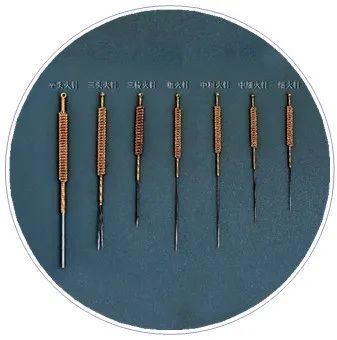 (2) Standardization of fire needle operational methods: Professor He advocates that when using fire needles, the practitioner should hold the needle in one hand and the fire in the other, bringing it close to the acupoint or area. The needle tip should be heated until red, considering the depth of the acupoint or area being needled. Beginners can mark the acupoints. Once the needle is heated to a bright red, it should be quickly inserted into the acupoint and immediately withdrawn (generally only requiring 1/3 of a second), or the needle can be retained. After needle withdrawal, a sterile cotton ball should be pressed lightly on the needle hole to alleviate the patient’s discomfort and promote closure of the needle hole.(3) Expansion of the treatment area: Professor He broke through the ancient limitation of “avoiding fire needles on the face,” believing that fire needles can be used on the face based on the condition’s needs, but care should be taken to avoid injuring the facial features. Generally, fine fire needles are preferred for shallow needling on the face. In most cases, fire needles on the face do not leave permanent marks and do not affect facial appearance.(4) Adjusting needle selection based on specific conditions: Depending on the patient’s specific condition and lesion location, appropriate acupoints should be selected. Generally, for new diseases, shallow needling is used; for chronic diseases, deeper needling is used. Shallow needling is used for superficial areas of the head, chest, back, and hands and feet, while deeper needling is used for well-muscled areas. Professor He often uses rapid point needling in clinical practice, but for chronic diseases or certain special conditions, fire needles can be retained. The intervals between patient visits and needling times vary according to the condition; acute diseases can be treated daily, while chronic diseases can be determined based on the patient’s condition and the healing of the needle hole, with long-term treatment possible, resting for 1-2 weeks after 10 treatments.(5) Expansion of the indications for fire needles: Through clinical exploration and practical observation, the clinical efficacy of fire needles has been extended to specific effects such as dispelling cold and dampness, clearing heat and detoxifying, dissipating nodules, expelling pus, promoting tissue regeneration, tonifying the kidneys and yang, warming the middle and harmonizing the stomach, lifting yang, regulating the lungs, relieving pain, stopping itching, eliminating numbness, calming spasms, and dispelling wind. Professor He not only uses fire needles to treat traditional bi syndrome, cold syndrome, meridian and sinew diseases, and bone diseases but also applies them to treat heat syndromes.(6) Discussion and summarization of fire needle precautions: If patients are fearful of fire needle therapy due to a lack of understanding, thorough explanations should be provided. The needle must be red hot, otherwise, it will be difficult to insert and cause severe pain. The operation must be bold and meticulous; if timid, the needling may be inaccurate, the depth may be inappropriate, or the needle may stick to the skin, making it difficult to withdraw. Caution should be exercised for shallow needling near internal organs, facial features, major blood vessels, and thinner muscles. Strict disinfection should be performed before needling, and care should be taken to protect the needle hole after needling. Do not wet the needled area for 24 hours to prevent infection.Do not eat or drink within one hour after needling to ensure the effectiveness of the treatment.Additionally, other treatment methods from the Three Passes Method can be combined as needed to enhance efficacy.Shi’s New Nine Needles – Fire NeedleProfessor Shi Huaidang, director of the Acupuncture Research Institute of Shanxi Province, developed fire needles based on 40 years of clinical experience, which is an important branch of the “New Nine Needles.” It includes a series of fire needle instruments of different specifications and models. The characteristics of Shi’s fire needle therapy are as follows:New Nine NeedlesImage: Illustrated Fire Needle Therapy, Beijing: China Medical Science and Technology Press ▼
(2) Standardization of fire needle operational methods: Professor He advocates that when using fire needles, the practitioner should hold the needle in one hand and the fire in the other, bringing it close to the acupoint or area. The needle tip should be heated until red, considering the depth of the acupoint or area being needled. Beginners can mark the acupoints. Once the needle is heated to a bright red, it should be quickly inserted into the acupoint and immediately withdrawn (generally only requiring 1/3 of a second), or the needle can be retained. After needle withdrawal, a sterile cotton ball should be pressed lightly on the needle hole to alleviate the patient’s discomfort and promote closure of the needle hole.(3) Expansion of the treatment area: Professor He broke through the ancient limitation of “avoiding fire needles on the face,” believing that fire needles can be used on the face based on the condition’s needs, but care should be taken to avoid injuring the facial features. Generally, fine fire needles are preferred for shallow needling on the face. In most cases, fire needles on the face do not leave permanent marks and do not affect facial appearance.(4) Adjusting needle selection based on specific conditions: Depending on the patient’s specific condition and lesion location, appropriate acupoints should be selected. Generally, for new diseases, shallow needling is used; for chronic diseases, deeper needling is used. Shallow needling is used for superficial areas of the head, chest, back, and hands and feet, while deeper needling is used for well-muscled areas. Professor He often uses rapid point needling in clinical practice, but for chronic diseases or certain special conditions, fire needles can be retained. The intervals between patient visits and needling times vary according to the condition; acute diseases can be treated daily, while chronic diseases can be determined based on the patient’s condition and the healing of the needle hole, with long-term treatment possible, resting for 1-2 weeks after 10 treatments.(5) Expansion of the indications for fire needles: Through clinical exploration and practical observation, the clinical efficacy of fire needles has been extended to specific effects such as dispelling cold and dampness, clearing heat and detoxifying, dissipating nodules, expelling pus, promoting tissue regeneration, tonifying the kidneys and yang, warming the middle and harmonizing the stomach, lifting yang, regulating the lungs, relieving pain, stopping itching, eliminating numbness, calming spasms, and dispelling wind. Professor He not only uses fire needles to treat traditional bi syndrome, cold syndrome, meridian and sinew diseases, and bone diseases but also applies them to treat heat syndromes.(6) Discussion and summarization of fire needle precautions: If patients are fearful of fire needle therapy due to a lack of understanding, thorough explanations should be provided. The needle must be red hot, otherwise, it will be difficult to insert and cause severe pain. The operation must be bold and meticulous; if timid, the needling may be inaccurate, the depth may be inappropriate, or the needle may stick to the skin, making it difficult to withdraw. Caution should be exercised for shallow needling near internal organs, facial features, major blood vessels, and thinner muscles. Strict disinfection should be performed before needling, and care should be taken to protect the needle hole after needling. Do not wet the needled area for 24 hours to prevent infection.Do not eat or drink within one hour after needling to ensure the effectiveness of the treatment.Additionally, other treatment methods from the Three Passes Method can be combined as needed to enhance efficacy.Shi’s New Nine Needles – Fire NeedleProfessor Shi Huaidang, director of the Acupuncture Research Institute of Shanxi Province, developed fire needles based on 40 years of clinical experience, which is an important branch of the “New Nine Needles.” It includes a series of fire needle instruments of different specifications and models. The characteristics of Shi’s fire needle therapy are as follows:New Nine NeedlesImage: Illustrated Fire Needle Therapy, Beijing: China Medical Science and Technology Press ▼
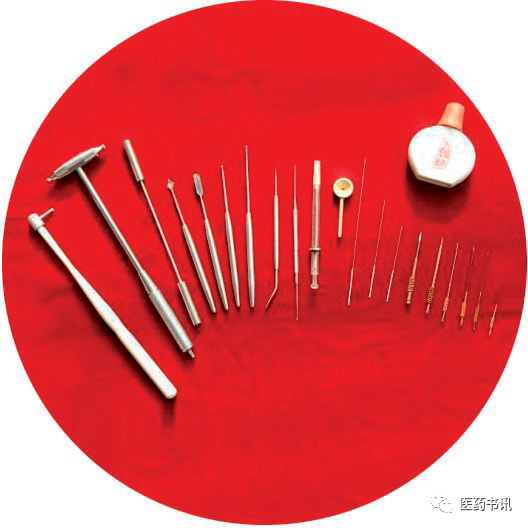
(1) Improved fire needle instruments: Professor Shi made fire needles from tungsten metal, which have characteristics such as high-temperature resistance, no annealing, minimal deformation, and high-temperature hardness. Six different shapes and specifications of fire needles were made according to different therapeutic needs.(2) Refined operational methods: Based on the experiences of predecessors, Professor Shi made new breakthroughs in fire needle operations, such as using a pressing needle to mark acupoints, avoiding the use of dye marking methods to prevent the formation of ink spots. Depending on the disease, patients may be positioned supine, prone, or lateral. The practitioner holds the needle like a brush, tilting the needle at 45° over the flame, heating it to three levels: bright white, bright red, and slightly red, applying three techniques: rapid insertion, shallow point needling, and slow cauterization. After needling, immediate pressure should be applied to the needle hole to reduce pain, and rubbing is strictly prohibited to prevent bleeding.(3) Focus on differential diagnosis for needling: Professor Shi proposed that different needling techniques should be used based on the disease type, constitution, and lesion location. For deep and rapid needling, the depth is similar to that of fine needles, heating the needle to bright white, inserting quickly and withdrawing rapidly, used for chronic gastroenteritis, trigeminal neuralgia, sciatica, post-stroke sequelae, various types of arthritis, impotence, dysmenorrhea, and other internal and external injuries; for shallow point needling, heating the needle to bright red, inserting quickly and withdrawing rapidly, used for small area moles, warts, tumors, and other facial diseases; for slow cauterization, heating the needle to slightly red, lightly and slowly cauterizing the surface of lesions larger than 5mm, such as moles, warts, ulcers, and perianal diseases.(4) Choosing instruments based on the disease: Professor Shi has treated nearly 60 diseases with fire needles, but different instruments are used clinically. Medium-thick fire needles are used for various joint effusions, cysts, small area mucosal ulcers, breast abscesses, pus drainage, lipomas, small area pigmented moles, and various warts; fire beryllium needles and fire pressing needles are often used together, first using fire beryllium needles for rapid cauterization, then using fire pressing needles for cauterization and repair, which can enhance hemostatic effects, such as for external hemorrhoids, skin growths, and elevated warts and tumors, cutting them level with the skin, then bandaging with sterile dressings; fire pressing needles are also suitable for superficial ulcers, anal fissures, superficial hematomas, large superficial moles, senile spots, internal hemorrhoids, and vitiligo; three-edged fire needles are mainly used for cauterizing medium-sized moles, warts elevated above the skin by 0.5mm or more, freckles, senile spots, and mucosal ulcers.National Application of Fire Needle TherapyIn recent decades, through the theoretical and clinical practice development by Professor He Purin and Professor Shi Huaidang, as well as improvements in fire needle instruments, fire needle therapy has been widely applied in internal medicine, surgery, gynecology, pediatrics, and otorhinolaryngology, treating over 100 types of diseases. More than 100 hospitals of various levels across the country have adopted fire needles as a primary treatment method in clinical practice. The regions with the highest frequency of fire needle therapy use are Beijing, Guangdong, Tianjin, Hebei, and Shandong.Moreover, fire needle therapy is increasingly applied in clinical practice, achieving new breakthroughs in disease treatment compared to traditional methods. The types of literature reported mainly focus on clinical research and case reports, with a relatively reasonable distribution. In recent years, research on the mechanisms of fire needle therapy has deepened, and experimental studies on fire needle therapy have gradually gained attention and development. Studies have found that fire needle therapy can significantly improve microcirculation in the skin, with noticeable increases in local temperature, reddening of blood, accelerated blood flow, and improved blood flow dynamics. Recently, our research team has conducted a series of studies on fire needle therapy for spinal cord injuries, finding that fire needle therapy can reduce the expression of proteins such as IL-1β, Caspase-3, and p38MAPK in spinal cord injury model rats, inhibit apoptosis, and promote the expression of BDNF protein, thereby exerting neuroprotective effects on spinal cord injuries; additionally, fire needle intervention in spinal cord injury rats can promote the proliferation of neural stem cells and their differentiation into neurons, indicating that fire needle therapy has a role in nerve repair.National Standards IssuedTo standardize the clinical application of acupuncture therapy, the country has formulated a series of standards for acupuncture instruments and operational specifications. The Acupuncture Technical Operation Specification Part 12: Fire Needle (GB/T21709.12-2009), hosted by the Beijing Acupuncture Three Passes Research Association, was approved and published by the National Standardization Management Committee in June 2009 and officially implemented in August 2009.
Acupuncture Technical Operation Specification Part 12: Fire Needle (GB/T21709.12-2009)
Image: Illustrated Fire Needle Therapy, Beijing: China Medical Science and Technology Press ▼
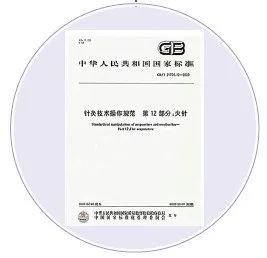
The release of this standard has played an important role in promoting the standardization of clinical applications of fire needle therapy, making fire needle techniques an irreplaceable treatment method in acupuncture practice. Additionally, national standards for fire needle instruments are also being drafted and discussed.This article is excerpted from Illustrated Fire Needle Therapy, edited by Li Yan and He Lin, Beijing: China Medical Science and Technology Press, copyright reserved, reproduction without permission is prohibited.
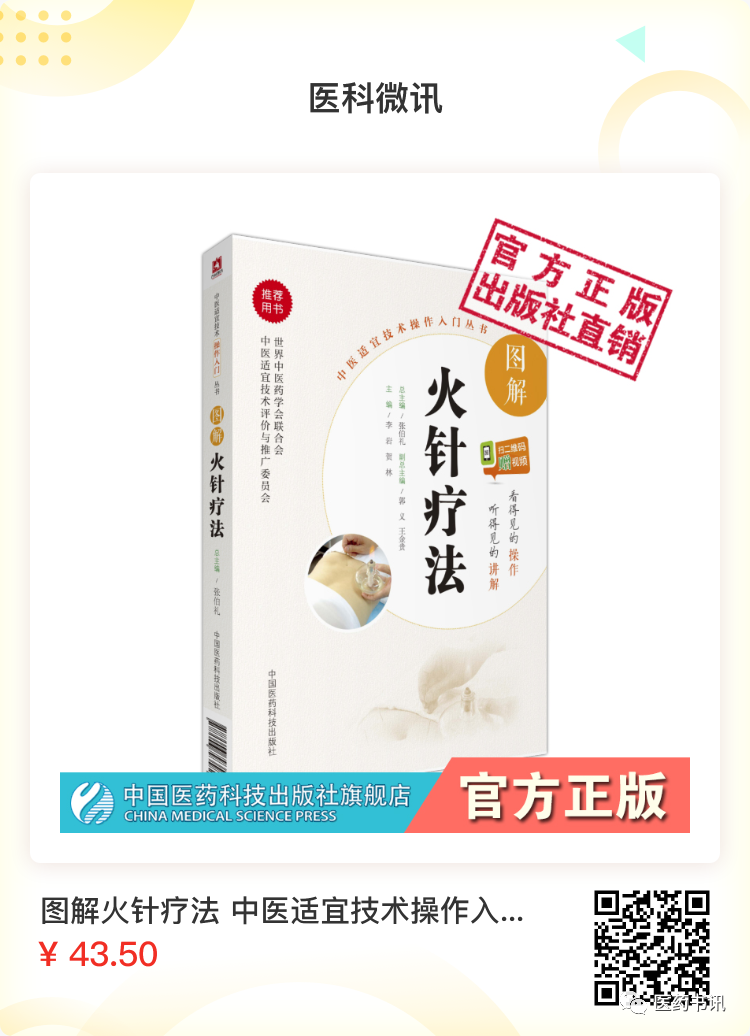
Previous Reviews
1. There are thousands of meanings, but only one principle: A collection of ancient Chinese medicine on circular motion
2. Yin Hui He | The accumulation of fist stones can raise Mount Tai
3. Cross-border TCM | The universe has six children
4. Cross-border TCM | A little closer to the sunlight
5. The nobility, masses, and rogues among bacteria
6. Fuwai Hospital | Diagnostic norms for aortic valve stenosis
7. When medicine meets art | Bladder biopsy
8. The journey of chrysanthemum abroad
9. Qing Nang | The hope of martial arts: moving back sores to the calf
10. Qing Nang | The legendary life of Cao Yingfu

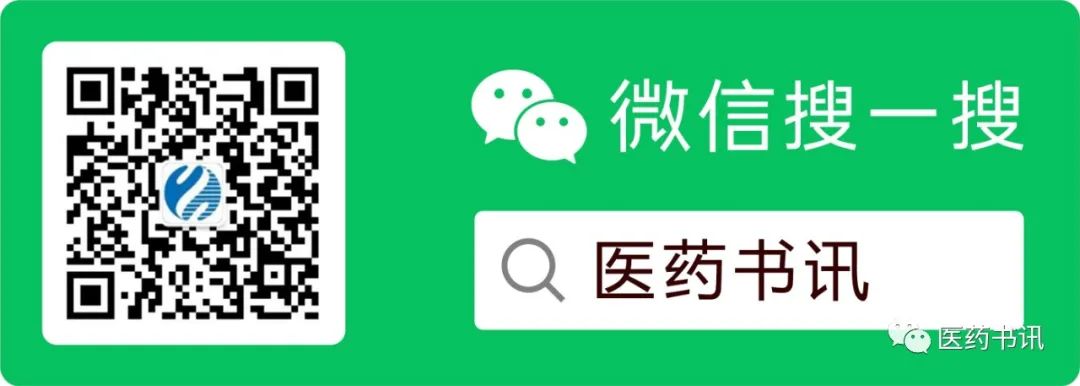
To purchase this book, please click belowRead the original text

